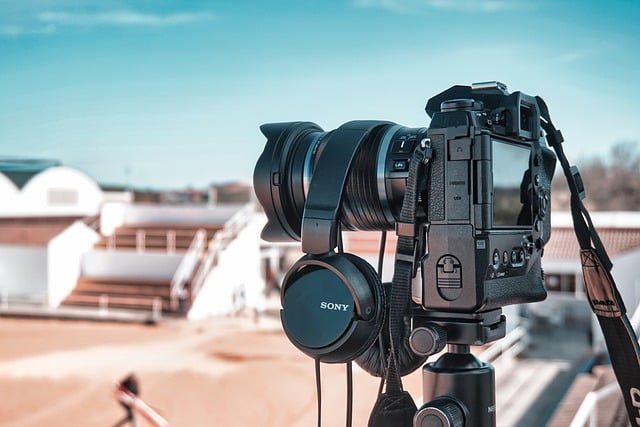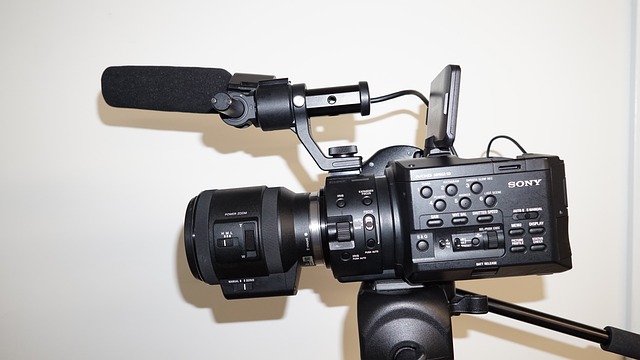Video compression is essential for burning DivX files to DVDs, balancing file size reduction with quality preservation. Using algorithms like H.264 and H.265, along with tools like HandBrake or VLC, users can optimize encoding settings and ensure data integrity during conversion from high-resolution DivX to standard DVD format. This process allows for efficient storage of high-quality video content on DVDs while adhering to size constraints, making it ideal for home entertainment and archival purposes.
“Discover the art of video compression without compromising quality. This comprehensive guide explores effective techniques, highlighting essential tools like DivX and burn software for seamless integration. Learn the ins and outs of optimizing your videos, from understanding basic compression principles to advanced DivX file manipulation. We’ll guide you through a step-by-step process of compressing DivX files to DVD, ensuring pristine video integrity while reducing file size. Optimize your media with our expert tips.”
Understanding Video Compression: What You Need to Know

Video compression is a process that reduces the file size of video content while attempting to preserve its original quality as much as possible. It’s crucial to understand this concept, especially when it comes to burning DivX files to DVD, as it ensures your video doesn’t lose its integrity during the conversion process. The key lies in selecting the right compression algorithm and settings that strike a balance between file size reduction and maintaining visual clarity.
Different codecs, like DivX, employ various techniques to achieve this. It involves manipulating data, removing redundant information, and encoding the remaining content more efficiently. By carefully managing these factors, you can compress videos without noticeable quality degradation. This is especially important when working with DVD formats, which have specific size limitations.
DivX Files: A Quick Overview and Their Significance

DivX files are a compression format that has been around for decades, known for its ability to compress video data significantly without noticeable loss in quality. This makes DivX an ideal choice for those looking to reduce file sizes for easy sharing or storage, especially on older media formats like DVDs. The process of burning DivX files to DVD involves converting the digital video into a format compatible with DVD players, ensuring it maintains its integrity throughout the compression and burning stages.
This method is particularly useful for creating backup copies of movies, TV shows, or personal videos, allowing users to enjoy their content on standard DVD players without worrying about compatibility issues. With DivX’s efficient compression, users can fit hours of high-quality video onto a single disc, making it a practical solution for home entertainment and archival purposes.
Effective Video Compression Techniques without Quality Loss

Video compression is a delicate balance—achieving smaller file sizes while preserving the original quality. Thankfully, modern techniques offer effective solutions without sacrificing integrity. Advanced codecs like H.264 and H.265 (HEVC) are industry standards, known for their exceptional compression efficiency. These codecs intelligently analyze video content, removing redundant data while maintaining sharp details.
One powerful method is adaptive bitrate encoding. This technique adjusts the compression rate based on the scene complexity, ensuring critical details remain crisp even in low-light or fast-motion sequences. Additionally, tools like hardware acceleration and specific compression software designed for tasks like Burn DivX Files to DVD can significantly enhance speed and quality outcomes.
The Role of Burn Tools in Preserving Video Integrity

Burn tools play a pivotal role in preserving video integrity during compression, ensuring the final product maintains its original quality. These tools are essential for tasks like converting high-resolution videos to standard DVD format (Burn DivX Files to DVD), as they optimize the encoding process while minimizing data loss. By employing advanced algorithms and settings, burn tools can reduce artifacts, maintain sharp visuals, and preserve intricate details found in the original footage, thus delivering a seamless viewing experience even after compression.
Moreover, modern burn software offers options for adjusting bitrates, resolution, and coding formats, allowing users to find the perfect balance between file size reduction and visual fidelity. This precision ensures that videos remain clear and undisturbed by compression, making it an indispensable step in preserving the integrity of digital content, especially when sharing or archiving valuable footage.
Step-by-Step Guide: Compressing DivX Files to DVD

To compress videos and burn them to a DVD, follow these straightforward steps:
1. Choose Video Editing Software: Start by selecting reliable video editing software that supports DivX format. Popular options include HandBrake, VLC Media Player, or Adobe Premiere Pro. These tools offer efficient compression without damaging the video quality.
2. Import Your DivX File: Open your chosen software and import the DivX file you want to compress. Ensure it’s playing smoothly to check for any errors or issues.
3. Select Compression Settings: Go to the encoding settings and choose a suitable codec (e.g., H.264) and resolution for your DVD format. Adjust bitrate, frame rate, and other parameters based on your desired quality and file size. Balancing these factors ensures optimal video integrity during compression.
4. Configure Output Options: Determine the output size and aspect ratio according to your DVD standard. Set up the burning settings, including disc type (DVD-R, DVD+R) and recording speed.
5. Start Encoding: Once everything is configured, initiate the encoding process. Your software will compress the video while maintaining its integrity. This step may take some time depending on the file size and complexity.
6. Burn to DVD: After successful encoding, use your burning software (often included with the editing tool) to write the compressed video to a blank DVD. Ensure proper disc formatting for error-free burning.
Video compression is no longer a trade-off between file size and quality. With the right techniques, such as those discussed for compressing DivX files to DVD, you can significantly reduce file sizes without sacrificing video integrity. Tools like burn tools play a crucial role in preserving this quality during the process. Now that you understand the basics of video compression and have explored effective techniques, you’re equipped to efficiently manage your DivX files, ensuring they remain true to their original quality – even when burned to DVD for sharing or archival purposes.
